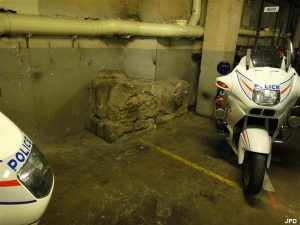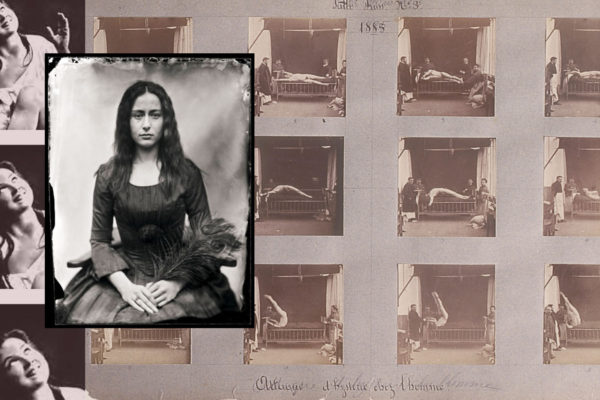
The pie murders of Paris
Fans of French cuisine turn away now because I am about to put you off your dinner. We’ve all heard of Sweeney Todd, the fictional London barber who slit his customers’ throats then gave the bodies to his lover to be cooked into pies and sold in her pie shop. The story has been around since the nineteenth century, first in a penny dreadful and more recently as a musical and a film. It’s a gristly, bloody tale but a ludicrous one. A hairdresser with a female lover? A Victorian woman owning a business? Also, all the stuff about baking people into pies. It beggars belief.
Or does it?
Because a legend of a murderous barber and his cannibal pies has been circulating since medieval times in Paris – and this story may very well have its basis in historical fact. Prepare to never look a pie in the eye again as I tell the tale of the vrai demon barber.
It is around the year 1430 and we are on the Île de la Cité, one of the two islands in the Seine, slap bang in the centre of Paris. The action takes place rue des Marmousets, a street that has since been rebuilt and renamed rue Chanoinesse.

The curious incident of the dog in the street
A dog has been making a nuisance of himself by barking incessantly outside the barber’s shop on rue des Marmousets. His owner, a German student at the nearby Notre Dame named Alaric, is nowhere to be found. Neighbours eventually call in the local constabulary to deal with the disturbance and their attention is drawn to barber’s shop: perhaps the dog is rooted to the spot because Alaric is inside?
Officers go inside and question the barber. Something must have made them suspicious – perhaps it is the barber’s behaviour or something they saw – but they decide to search further, and go down into the shop’s cellar. There they make their grim discovery.
The cellar is dark and filthy. But there is worse, much worse to be seen. On a large square stone are bloody tools for cutting – knives and razors – and the remains of bones and body parts on the cellar floor.
Confronted with this evidence, the barber confesses: he has been killing his clients, mainly Notre Dame students – and, yes, Alaric was one of them. The young men would come into the shop, sit in the chair to be shaved but instead have their throats slit. The barber then took the bodies downstairs where he would skin them, chop the bodies into pieces, then grind the chunks of meat into mince.
And it’s here that the story gets really bad. Because the barber wasn’t killing people for perverse homicidal kicks: he was doing it for money. He sold the ground-up human flesh to his next-door neighbour, a pâtissier, who baked the meat into pies.
Wait, do French people eat pies?
Yes, they do! While not nearly as prominent a feature in the national diet as in Britain, meat pies certainly exist in France. My best guess is that the human pies would have been a type of pâté en croute, similar to a pork pie, or perhaps a friand, a sausage roll-type of affair. But I digress…

The pies are to die for
Until his vile secret ingredient was exposed, the pâtissier had been enjoying great success in his trade. Parisians couldn’t get enough of his human pies. The meat had a delicate flavour, quite unlike anything they had experienced before, and even King Charles VI was said to be a fan.
While we can never know the motivation behind killing people to put in pies, a financial one seems the most credible. Meat is an expensive product, sometimes in short supply; it isn’t beyond the realms of possibility that a struggling pâtissier might look around for alternative sources of pie fillings. And the Latin Quarter of Paris was teeming with perfect victims in the form of overseas students: young enough to have sweeter flesh, and far from any family that would notice they had disappeared.
But with his accomplice’s confession, the pie-maker’s days were numbers. He, too, confessed and the two men were taken away to face trial and a swift sentencing. Their punishment was brutal, as befitting the horror of their crimes. The barber and the pâtissier were taken to the Place des Grève where they were locked in iron cages and burned alive.
But justice-by-fire was not yet over. The buildings where the crimes had taken place were burned to the ground – a common practice at this time – and a small stone pyramid was erected in their place reminding people of the horrors that went down there. For over a hundred years, no buildings were permitted to be erected on that spot.
How much of this is nonsense?
I mean it’s impossible to say. There is certainly doubt about the exact location where these supposed crimes took place. One popular fact touted on the internet is that the stone block on which the barber butchered his victims can be seen today in the underground garage of the Paris police’s motorcycle division. It’s located at 18, rue Chanoinesse. Look, here’s a photo!

Problem is that this part of rue Chanoinesse is not where the ancient rue des Marmousets was. So, fun, but unlikely.
Then there’s the problem that there are no contemporary records of the crime. The earliest written account is from 1612 (180 years afterwards) where the author Jacques du Breul recounts the widespread rumours about murders committed by a barber and a baker. He notes that the area where the shops once stood is empty and the pyramid is in still partially in place. But Breul is at pains to point out that no court records of the crime nor the punishment exist.
Over the years as the story is told and retold, various details are added such as the faithful dog alerting passersby to the crime, the German student, the number of victims increases and their ages decrease (they are children in some versions) and in one nineteenth century telling, the barber is suddenly Jewish!
Let’s just say that MOST of the details are probably embellishments. But is there a kernel of truth in there somewhere? I don’t see why not. The moral of the story is: be careful where you buy your pies.





